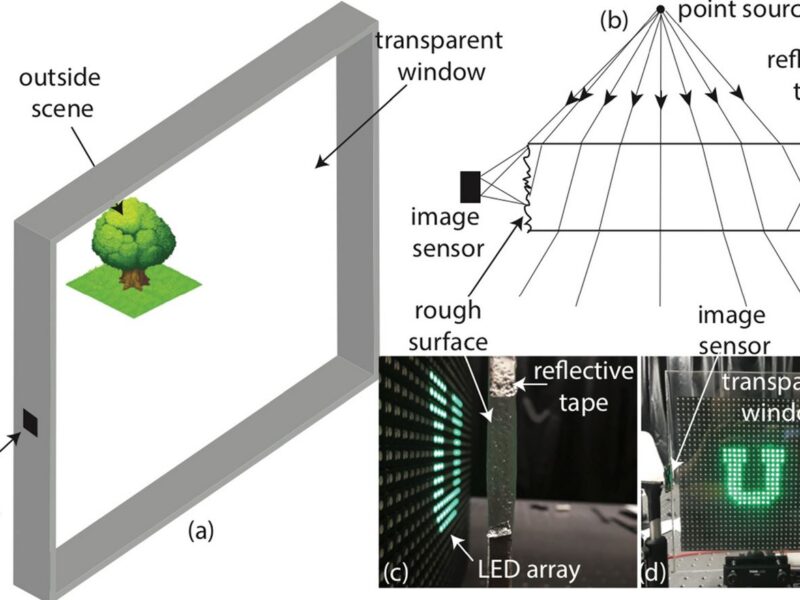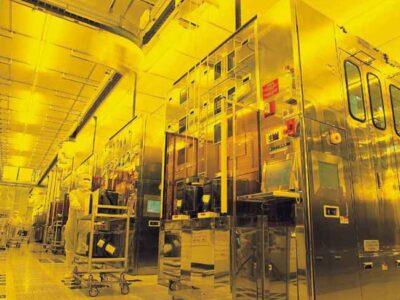
Researchers turn pane of glass into see-through lens-less camera
Unlike conventional cameras that block the view from the scene they are recording (with their sensor facing the object), here the sensor is turned 90º away from the scene, directly facing the rough edge of a transparent window. But since all other edges of the window were designed smooth and covered with reflective tape, the window pane acts as a scattering medium allowing light rays from a scene to reach the sensor within its acceptance angle.
In their paper “Computational imaging enables a “see-through” lens-less camera” published in the Optics Express journal, the researchers detail how they first had to experimentally measure the scattered image for all the individual emitting points of a LED array to determine the point-spread function (PSF) of the system, that is, the optical transformation from a light source coming from outside the window and eventually reaching the sensor pixels).
Once the point-spread function determined, they were able to capture images of arbitrary objects (displaying simple patterns with their 32×32 test LED array) and reconstruct the images by solving the linear inverse of that function.

(b) Signal capture by the CMOS sensor is only
possible through the scattering out of light rays
on the rough edge of the window pane.
(c) Side-view of the experimental setup (without sensor).
(d) Front-view of the setup where the calibration
LED array can be seen through the glass.
Because very few scattered light rays end up reaching the sensor, the distance between the object and the transparent window plays a pivotal role in the quality of the image reconstruction. For their demonstration, the researchers empirically found they would get the best results when placing the LED array 150mm away from the 200x225mm plexiglass acrylic pane they used as the window pane. With this set up and a 640X480 pixels, 8-bit CMOS image sensor placed on one rough edge, they achieved a spatial resolution of about 0.1 line-pairs/mm, with depth-of-focus of at least 10mm. The paper also reports colour and video imaging.
The researchers anticipate such a see-through imaging technique could find its way in eye tracking applications for augmented-reality glasses or in car windshields (for gaze tracking). Next, to compensate for the absence of lens and the lack of optical focusing capability, they want to explore the possibility of computational refocusing. Another path of research could be to apply deep neural networks for application-specific imaging purposes which would not require complete image reconstruction. They demonstrated this very idea for digit classification in a previous paper titled “Lensless-camera based machine learning for image classification”.
University of Utah – www.utah.edu
Related articles:
Lens-less camera sensor chip re-focuses on the fly
Origami technique turns flat optical sensors into hemispherical eyes
Rambus prototypes 2x2mm lens-less eye-tracker for headmount displays
Rice University reports no-lens camera
 If you enjoyed this article, you will like the following ones: don't miss them by subscribing to :
eeNews on Google News
If you enjoyed this article, you will like the following ones: don't miss them by subscribing to :
eeNews on Google News


